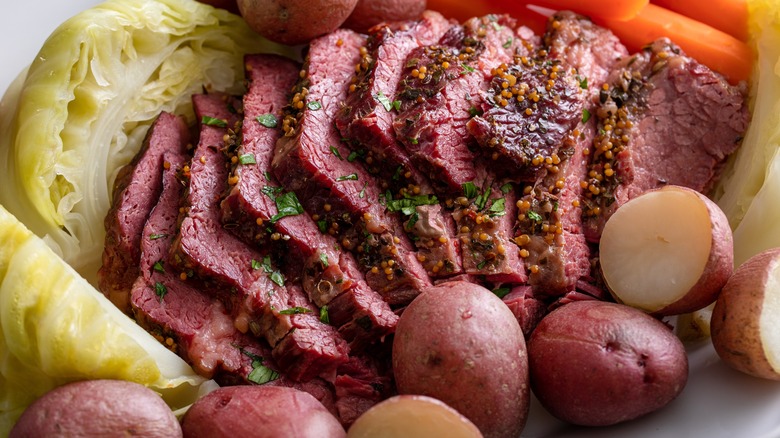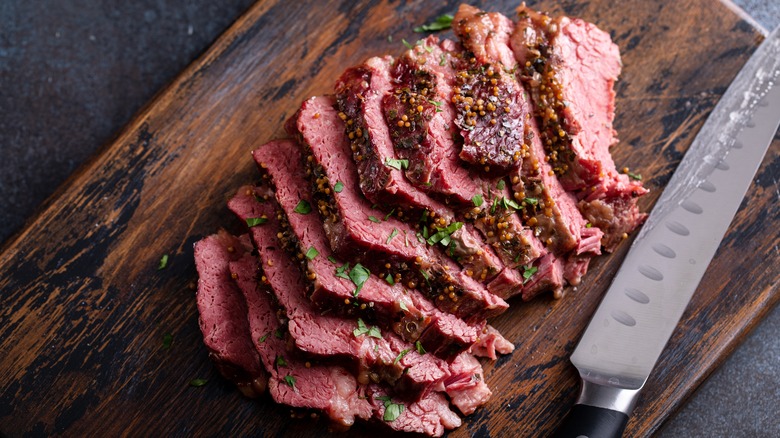How To Cut Corned Beef Like A Pro
Once considered an inferior cut of meat, brisket was one of the most affordable proteins available to poor Irish- and Jewish-American immigrants during the 1800s. With their culinary skills, they cured it in salt and braised it to perfection, transforming the tough cut into melt-in-your-mouth corned beef. Those who know this keep a good corned beef and cabbage recipe in their culinary arsenal.
Some hold it in such high regard that they reserve it for special occasions like birthdays or St. Patrick's Day. That being the case, it may have been a while since you last had to exhibit your corned beef carving skills. That braised beef is so delightfully tender that just looking at it the wrong way might cause it to crumble. As such, successfully slicing it requires a touch of luck and some skill.
Once the brisket has been removed from its broiling liquid, it's important to let it rest before slicing. While this may go against everything in your corned beef-loving nature to not dig right in, doing so may result in less-juicy slices of meat. Allowing the protein to bask in its juices for 10 to 15 minutes gives the meat a chance to reabsorb them instead of seeing them squeezed out onto the cutting board. As the juices work to make the meat more tender, it also becomes easier to cut. Then, because corned beef must be cut against the grain, consider setting the brisket on your cutting board with the fat facing downward. This will allow you to more easily identify the grain.
It's all about the angles
After your beef has had a moment to relax, it's just about time to get carving. Corned beef is like steak, in that it should be cut against the grain, meaning that your slices should be made perpendicularly to the direction of the muscle fibers. To identify the grain, look for parallel lines running across the length of the cooked corned beef. Using a sharp knife, cut against the grain at a 90-degree angle.
Cutting against the grain works to shorten the muscle fibers, ensuring your slices of corned beef will be tender instead of chewy. This is especially true in the case of brisket, which is cut from a weight-bearing part of the cow. As such, the muscle fibers are particularly dense and tough.
A typical corned beef and cabbage plate calls for ¼-inch thick-pieces of beef. While slices that size can easily be piled on marbled rye for a rustic sandwich, you can also make thinner cuts for a more traditional deli-style sandwich. Corned beef hash recipes often call for canned corned beef, but slicing your freshly-broiled beef into cubes makes for a killer breakfast hash. No matter which way you slice it, corned beef is the best (as long as you cut it against the grain).

